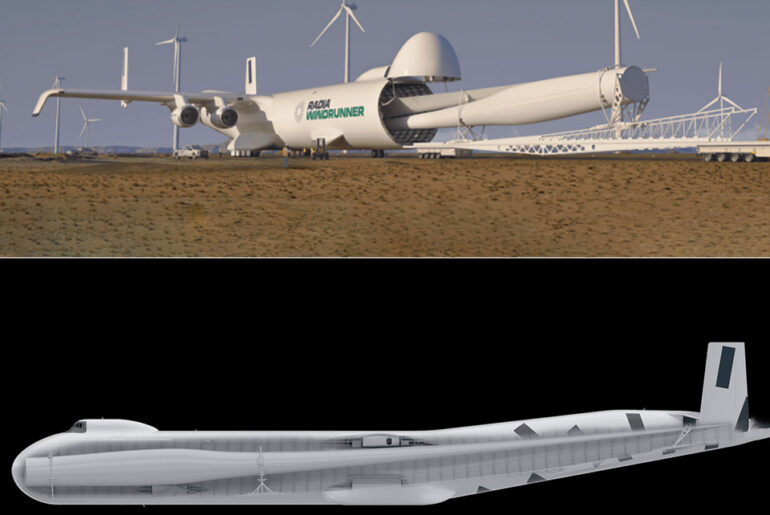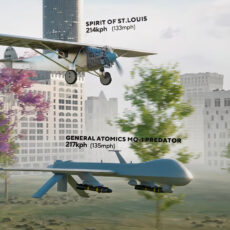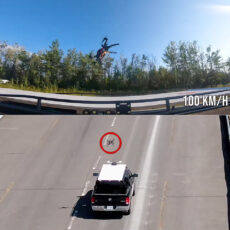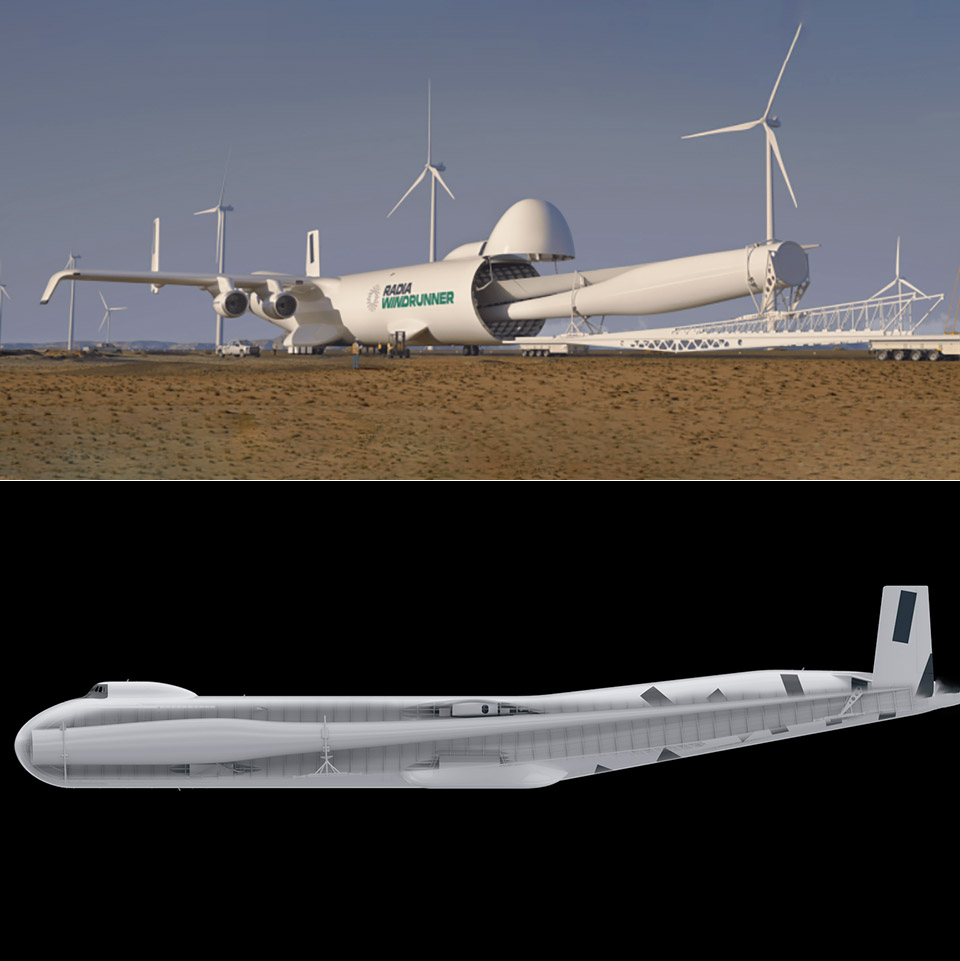
Aviation has always been about scale, from the barnstormers who flew biplanes in the 1920s to the Cold War giants that redefined heavy lifting. Radia, a Colorado-based startup, has entered the fray with the WindRunner, a cargo plane that takes scale to new heights. This monster, 109 meters from nose to tail (longer than a football field) will carry loads no other aircraft can. Radia engineers started drawing it out in 2016 with a simple question: how do you move enormous wind turbine blades to remote locations without breaking up highways or rivers? The answer is in their hangar-sized drawings, a four-engine jet designed for one big job, with a few extras along the way.
Radia designed the WindRunner around the uncomfortable fact that turbine blades can be 105 meters long but weigh less than you’d think given their length. A single blade fits into the fuselage like a sword in a sheath, leaving only a few meters of wiggle room on each side. If needed, two shorter ones, each about 90 meters, can be placed side by side. The cargo hold is 106 meters long, 7.3 meters wide and 7.3 meters tall with enough volume to carry six Antonov An-225s, the Ukrainian monster that was destroyed in 2022 and used to hold the record for the largest cargo hauler. Radia kept the wingspan at 80 meters, narrower than the An-225’s 88, so it will fit in current airport gates.
- 2 AVIATION LEGENDS, 1 BUILD – Recreate the iconic Boeing 747 and NASA Space Shuttle Enterprise with the LEGO Icons Shuttle Carrier Aircraft (10360)...
- DEPLOY LANDING GEAR – Turn the dial to extend the massive 18-wheel landing system on your airplane model, just like real flight operations
- AUTHENTIC FEATURES & DETAILS – Remove the tail cone, engines, and landing gear from the NASA shuttle and stow them in the cargo bay during flight
It is powered by four conventional jet engines—Radia has yet to reveal the source, but they are approved and run on standard gasoline or sustainable blends. Cruising at Mach 0.6 (740 km/h), the plane reaches 41,000 feet, high enough to avoid most weather. The range is more than 2,000 kilometers with a full load of 72.6 tonnes, which isn’t much in comparison to the military’s C-17 Globemaster, but makes sense when you consider the cargo’s shape rather than its weight. Unloading takes place at ground level, directly onto trucks or cranes, saving hours from the typical struggle.
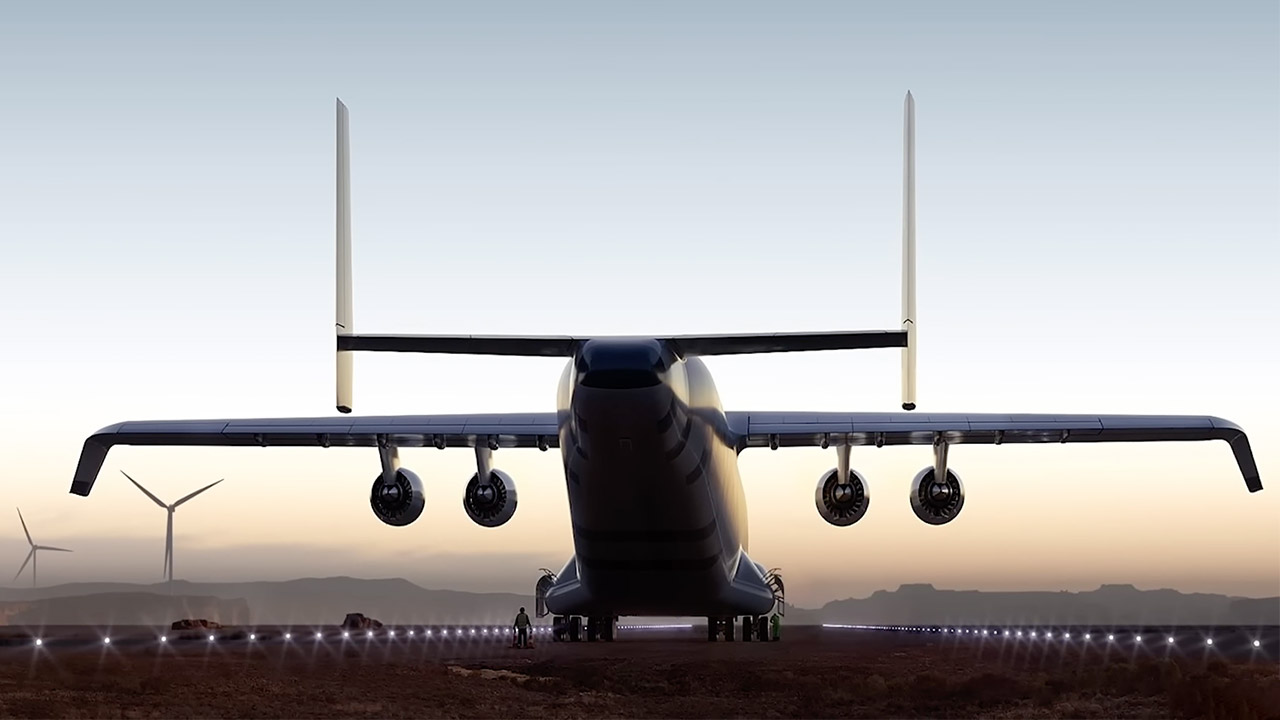
Landing gear reveals the true spirit of this plane, with robust struts and large tires capable of landing on packed dirt or gravel strips as short as 1,800 meters—six times its own length. There’s no need for built runways or billion-dollar bases; the WindRunner deploys to wind farms in the highlands or deserts, where the roads end and the wind howls constantly. The Fowler flaps on those massive wings slow the approach to 100 mph even when fully loaded, and the entire thing handles uneven fields like a bush plane on steroids. Radia tested scale models in the wind tunnel to verify everything works, from the flexibility in the long fuselage to the stability of the H-tail, which maintains the vertical stabilizers low enough to clear airport fences.
Wind turbines get larger to harvest more free electricity from the air, but their blades meet a ground barrier—too long for bridges and too bendy for barges. Radia imagined an airborne solution in which a fleet of these planes could transfer components from coastal manufacturers to inland areas, decreasing costs and freeing up space for farms that generate cheaper electricity. A single WindRunner can move a blade capable of powering thousands of houses and dump it precisely where it is needed, with no disassembly necessary. The company believes that having a dozen or more in service might transform the game for onshore wind, making it competitive with offshore wind, which is extremely expensive to run.
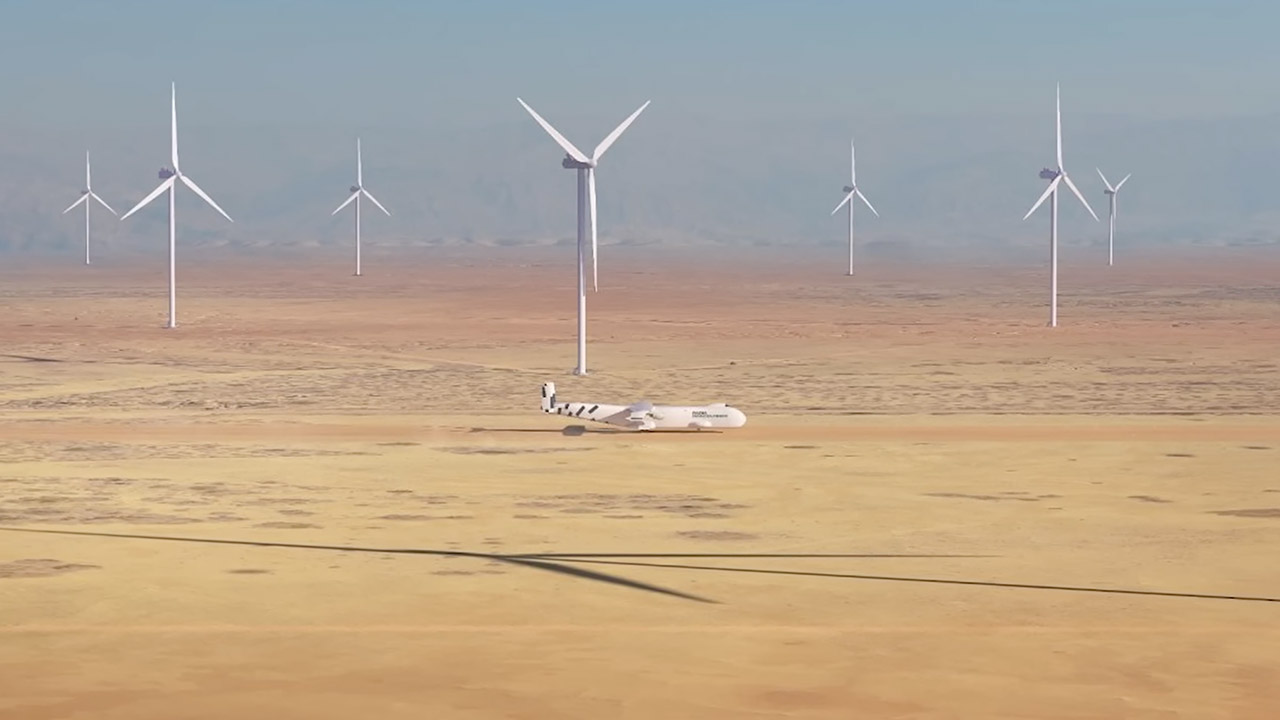
First metal cuts in Colorado Springs, with a full scale mockup already getting attention at events like Farnborough and Paris in 2025. Entry into service is 2030s with first flight in 2029 if funding sources remain consistent.
[Source]

